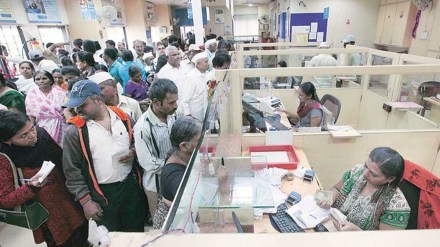Banks are focusing on expanding their unsecured retail loan portfolio at a time when their net interest margins are likely to witness compression in the medium term.
Kotak Mahindra Bank’s unsecured retail advances rose to 9.3% of overall advances as on December 31, from 6.3% a year ago. In the next three quarters, Kotak Mahindra Bank expects unsecured retail loans to comprise around 15% of overall advances.
Similarly, the share of unsecured retail loans in Axis Bank’s overall advances rose to 12% as on December 31, from 11% a year ago. Going ahead, the bank plans to increase the proportion of unsecured loans to 22-24% of the retail loan portfolio.
Also read: Govt extends free 5G test bed facility for registered MSMEs, startups till January 2024
Apart from Axis Bank and Kotak Mahindra Bank, other banks are also looking to increase the share of pricier unsecured retail loans within their overall loan portfolios.
“Unsecured retail segment is a good business. With a lot of information available through the bureaus, the associated risk is comparatively low. We have stayed invested in this business and will continue to do so,” Rajan Pental, executive director, YES Bank, said.
Unlike secured retail loans like home and automobile loans, unsecured retail loans are not lent against a collateral. Hence, these loans come with a higher interest rate than secured loans. Typically, the average yield for unsecured loans is in range of 13-14%, compared with 9-10% for secured loans.
The repayment tenure of these loans is up to five years, although some banks offer a longer tenure. Broadly, unsecured retail loans comprise around 10-15% of overall loan portfolio of banks, say experts.
Specifically, consumer durable loans rose 46% year-on-year as of December, the Reserve Bank of India (RBI) ‘s latest data on the sectoral deployment of credit showed.
Among other categories of unsecured retail loans, the credit card outstanding portfolio rose 27% YoY, education loans rose 13.2% and other personal loans rose nearly 24% YoY.
“Presently, our book on unsecured personal loans is moderate and as a part of diversification of the loan book, we have plans to grow focus on this segment with risk-mitigated due diligence,” Suresh Khatanhar, deputy managing director, IDBI Bank, said.
With the RBI easing the quantum of repo rate hikes, various banks are likely to see compression in their net interest margins in 2023-24 (April-March) as re-pricing of deposits occurs at a slower pace than loans. Hence, various banks have been focusing on increasing the share of margin-accretive products within their overall portfolios.
“Within retail, we are focusing on some segments which give us higher margins, like unsecured personal loans, gold loans, etc,” Joydeep Dutta Roy, executive director, Bank of Baroda, said.
Nevertheless, this strategy among banks to grow their share of unsecured retail loan book raises some concerns over the asset quality of these lenders. But, secured loans will continue to make up the lion’s share of banks’ portfolios in the long-term, say experts.
“When we talk about a movement to unsecured retail, that can be incremental, at best a couple of percentage points in a short span of time. You cannot have a situation where a bank focuses only on unsecured retail. It has to be a balanced approach. Within that, they will tweak it a bit so that some net interest margins gains will be used to offset the pressure that comes through. Otherwise, it cannot be more than a few percentage points here and there. It will be incremental, but will not see a very big shift,” Karan Gupta, director – financial institutions, India Ratings and Research, said.
